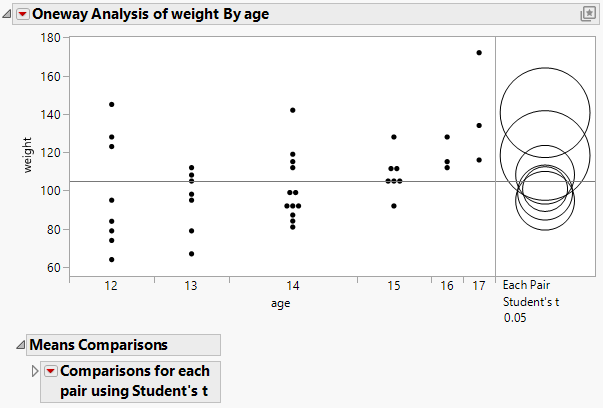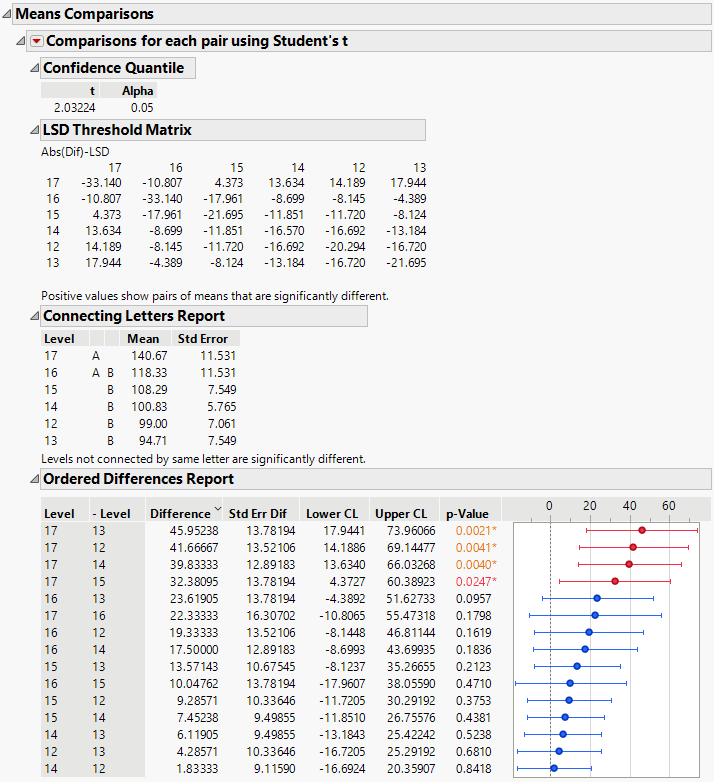Example of the Each Pair, Student’s t Test
This example uses the Oneway platform to illustrate the use of all possible t tests.
1. Select Help > Sample Data Folder and open Big Class.jmp.
2. Select Analyze > Fit Y by X.
3. Select weight and click Y, Response.
4. Select age and click X, Factor.
5. Click OK.
6. Click the Oneway Analysis red triangle menu and select Compare Means > Each Pair, Student’s t.
Figure 6.13 Example of Each Pair, Student’s t Comparison Circles
The means comparison method uses Fisher’s least significant difference (LSD) method to evaluate differences between individual pairs of means. The method does not maintain the error rate for simultaneous comparisons. For a large number of groups consider other comparison methods.
Figure 6.14 Example of Means Comparisons Report for Each Pair, Student’s t
In Figure 6.14, the LSD threshold table shows the difference between the absolute difference in the means and the LSD (least significant difference). If the values are positive, the difference in the two means is larger than the LSD, and the two groups are statistically significantly different.

